I recently had a number of conversations on “Virtual Meetings” or “Virtual Events”. The briefing boils down to the following two questions:
- How can I create a virtual version of my now canceled physical event, meeting, and interaction with my customers/partners?
- How can I take the lead in this virtual space?
I am surprised how often the initial briefings immediately jump into the aspects of production and tools. A sort of fear of missing out on the latest coolest online tool or platform. There is a deeper fear of missing the virtual boat, and fear of overnight irrelevance.
A production themed briefing is usually a sign that the client is looking for some quick and dirty quick wins (the lipstick on the pig), is not clear about the different dimensions at play when architecting an on-line (or off-line) event, and has even less clarity on their ambition levels.
In those conversations, I love to do some live (virtual) whiteboarding. By doing so, I stumbled upon a framework that seems to resonate with many people.
During some Zoom meetings, I could literally hear the clicking of the screen pictures while I was drawing.
So I decided to make a bit cleaner version of it and just put it on my blog. I call it Petervan’s Ambition Cube for Virtual Meetings © 2020 ;-).
I have certainly learned one thing in the last couple of weeks: the more I share it, the more feedback I get. The story becomes more coherent, and the network helps me identifying the blind spots.
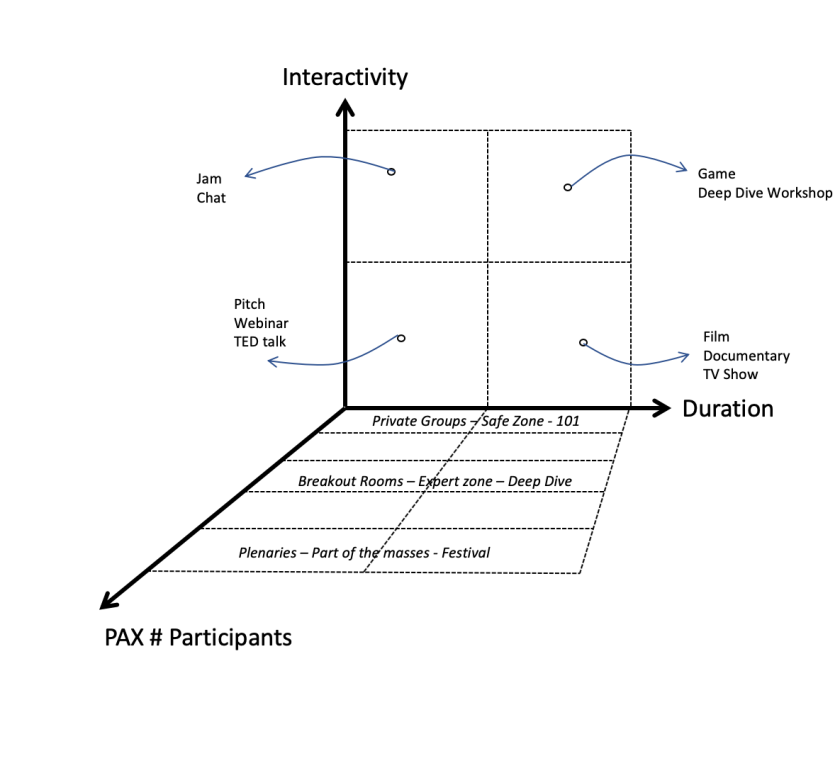
There are 3 axes:
- Duration: how long does the event last? From 5 minutes to 2 months for example
- Interactivity: how much is the audience involved? From 100% passive listening to immersive free play
- PAX # Participants: from a 1-1 till several thousands of participants
On the Duration/Interactivity pane, one can start plotting different types and formats of events. From simple 5 min one-way pitches and introductions to deep immersive games and workshops.
The PAX dimension is an interesting one. If we maintain our physical event vocabulary, we can plot some meetings styles from Private Groups, over Breakout Rooms to Plenary sessions. But it is a physical vocabulary.
I started wondering what a truly virtual vocabulary would look like:
- Interactivity would become “participation level/intensity”
- Duration would become something like “rhythm” or “tempo”
- PAX would become something like “connectedness”
The Ambition Cube then looks like this:
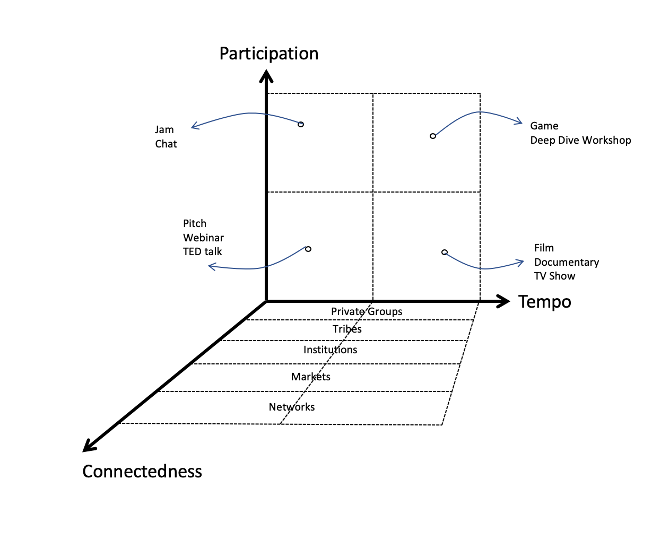
It becomes really interesting when I start mixing The Tribes – Institutions – Markets – Networks (TIMN) framework of David Ronfeldt‘s (TIMN was defined in 1996 already. Link to the PDF here). I started reflecting on how these groups communicated and what they enable:
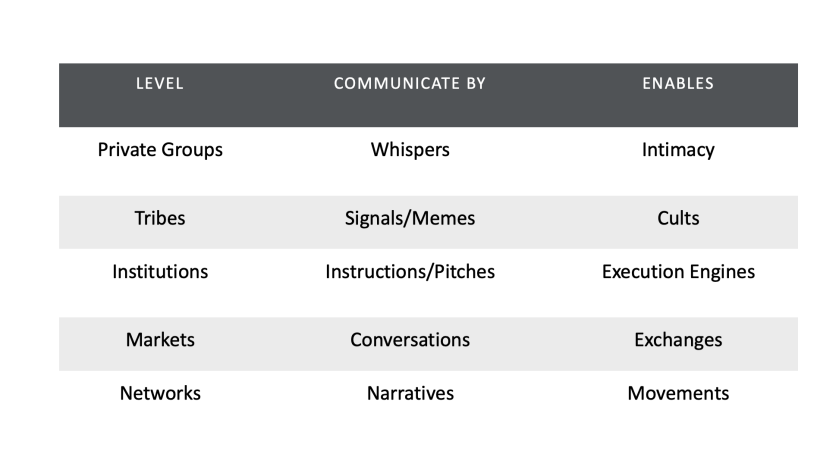
Now, we are getting somewhere. It becomes clear that the challenge is not to virtualize the existing. I believe the right questions are:
- How do we create collective memories and narratives?
- How do we create a participatory culture?
- How do we raise your game on what goes on in that little window/screen?
- How can we resonate at another, additional level than the pure cognitive?
- How can we advance at an aesthetic, spiritual, and moral level?
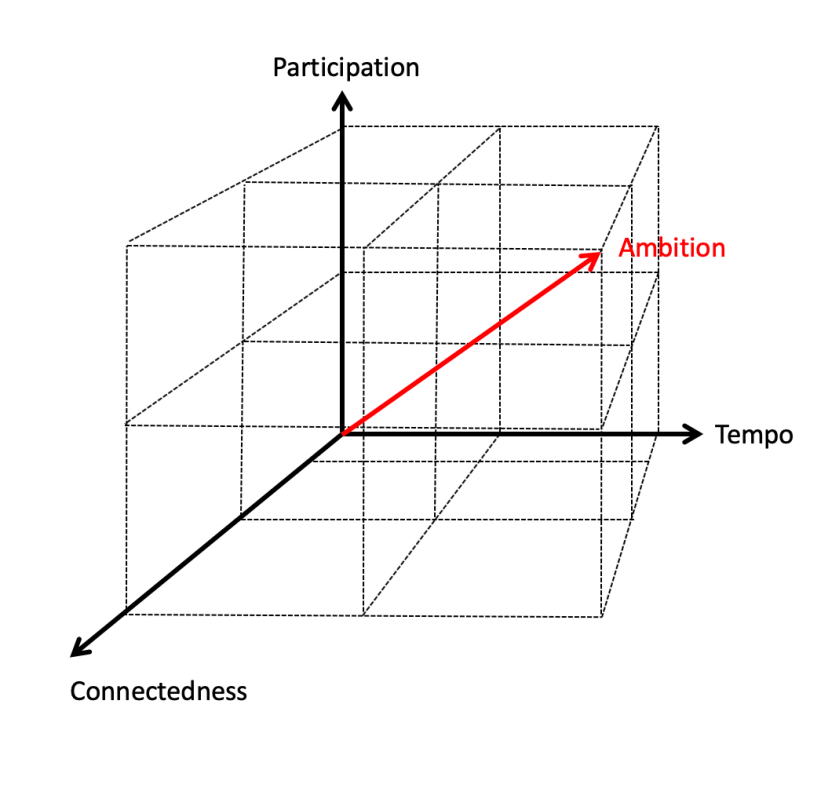
We can now use the Ambition Cube to define our “virtual” ambitions. Plotting where we are today, and where we want to be in n-number of days, weeks, or months. Once you know this, you can start looking into the many tools that exist to make the magic happen and start looking for architects, curators, and production companies that can help you with the coherence of content and experience.
To close, I also made a “clean” 3D version of the cube in a 3D drawing tool called Blender:
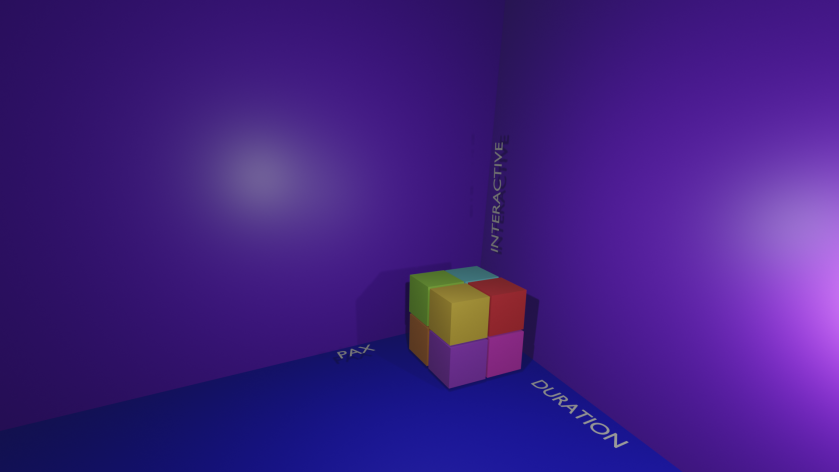
I am working out loud here: please give feedback, help me identifying the blind spots, share your experience when using this with your clients.
The Ambition Cube is licensed CC BY-SA 4.0, as are all materials found on this site.
Enjoy!


Thank you – this is insightful and very helpful.
I’d be interested in learning what collaboration artifacts facilitators most often see produced by each part of the cube. Examples: recorded speeches & slide presentations, recorded conversations, Google doc notes, survey results, brainstorming results, collaborative drawings, products of a hackathon (ie software, a co-edited YouTube video, etc), whiteboard output, etc.
Thanks for your feedback and kind words of encouragement, Lucas! When I have some more time, I will try to do a mapping like you suggested. Second thought: the examples you give are great, but I believe we need some other artifacts as in ARTifacts, using art to resonate with the audience at another level than only the cognitive. This is not so much about production OUTPUT, but more about the production INPUT, the artifacts used to get a high-quality connection in virtual meetings